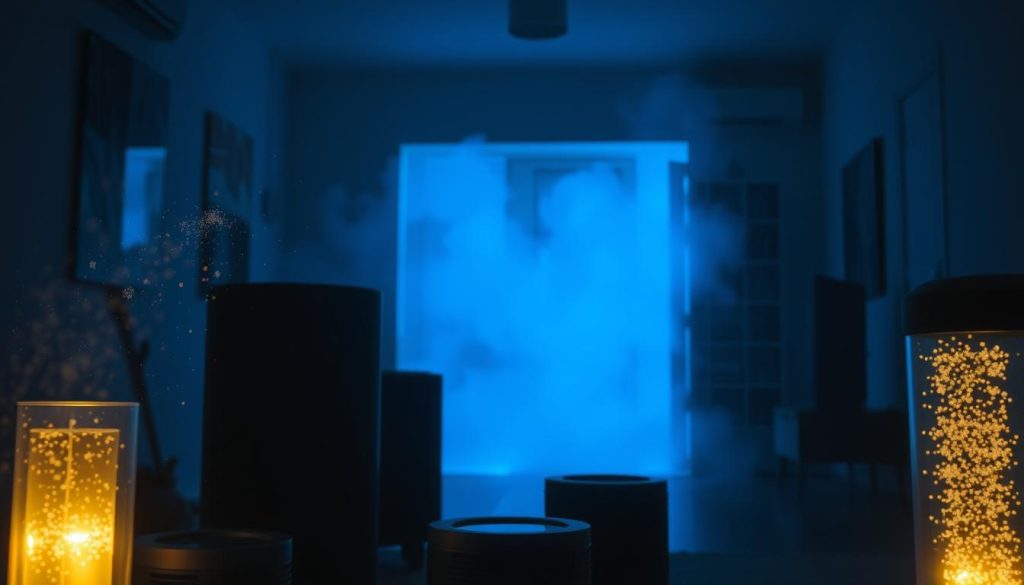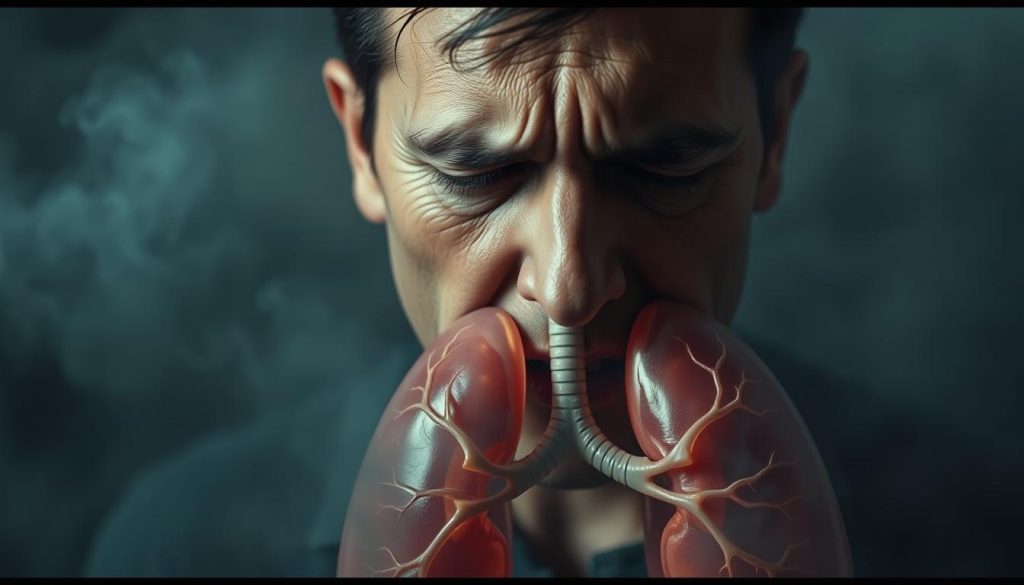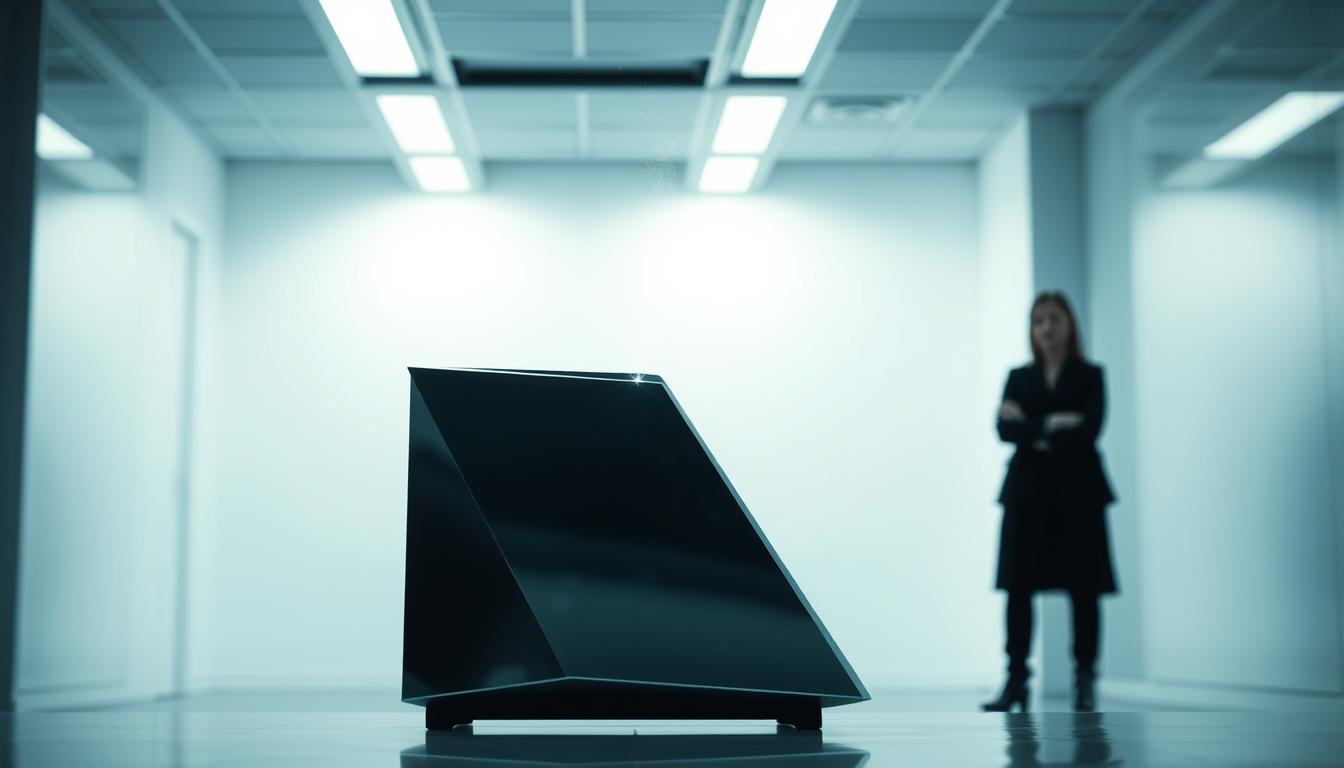Negative ion air purifiers are becoming more popular. They claim to clean the air and improve health. But, it’s important to look into the possible health risks and understand the safety of ionizers. This article will dive into the side effects of negative ion air purifiers, explain how they work, and discuss their health impact.
We aim to help you make smart choices about using negative ion air purifiers in your home. By exploring these key points, we hope to guide you towards making informed decisions.
Understanding Negative Ion Air Purifiers
Negative ion air purifiers are becoming more popular for improving indoor air quality. They work by creating negative ions that help remove pollutants from the air. This makes the air cleaner and healthier to breathe.
How Do They Work?
Negative ion air purifiers create negative ions. These ions stick to pollutants like dust, pollen, and smoke. This makes the pollutants too heavy to stay in the air, helping to clean it.
Types of Ionizers
There are many types of ionizers out there. Standalone units are great for single rooms, making the air cleaner in one place. HVAC-integrated ionizers, on the other hand, fit into your home’s heating and cooling system. They clean the air throughout your entire home.
| Type | Application | Key Features |
|---|---|---|
| Standalone Ionizer | Single room coverage | Portable, easy to use |
| HVAC-Integrated Ionizer | Whole-home coverage | Seamlessly integrates with existing systems |
Potential Health Risks of Negative Ion Air Purifiers
Negative ion air purifiers are known for improving air quality. But, it’s important to know about the health risks they might cause. Studies have shown concerns, mainly for people with health issues.
Respiratory Issues
Negative ion air purifiers can make respiratory problems worse for some. The ions mix with air particles, including allergens and pollutants. This can be harmful for those with sensitive lungs, leading to breathing difficulties.
Allergic Reactions
Negative ions can trigger allergies in some people. Ionizing air can increase the amount of particles in the air. This can cause symptoms like sneezing, runny nose, and itchy eyes, more so in places with these purifiers.
Aggravation of Asthma
People with asthma should be careful with negative ion air purifiers. The higher amount of particles can make asthma symptoms worse. This can lead to more and more severe asthma attacks. It’s vital for asthma patients to think about these risks before using these devices.
Negative Ions and Indoor Air Quality
Negative ions are getting a lot of attention for improving indoor air quality. These ions have an extra electron, making them negatively charged. People think they can stick to dust, pollen, and pollutants, making them fall from the air.
Using devices that make negative ions, like air purifiers, might really help air quality. This is great for places with bad air or for people with breathing problems.

Air purifiers with negative ion technology are seen as a big plus. They aim to cut down on airborne bad stuff, making homes healthier. But, it’s important to remember that some air purifiers might make ozone, which is bad for health.
Many people say air purifiers with negative ions make indoor air feel fresher. This feeling of freshness is a big plus. Getting the right info on these devices helps people make smart choices to improve their air quality.
Ozone Production Concerns
Ionizing air purifiers clean the air but also make ozone. This ozone can cause safety issues. It’s key to know about these problems if you’re thinking of using these devices.
Short-Term Effects
Ozone from air purifiers can irritate your breathing system right away. You might cough, feel throat pain, or have trouble breathing. Think about these side effects when deciding if cleaner air is worth it.
| Short-Term Effects | Symptoms |
|---|---|
| Respiratory Irritation | Coughing, throat irritation |
| Breathing Difficulties | Shortness of breath |
Long-Term Health Impacts
Long-term ozone exposure can be worse. It might lead to serious lung diseases and harm lung function. Rules are in place to keep ozone levels safe. Following these guidelines helps avoid these health risks.
Evaluating Safety Concerns
When we talk about negative ion air purifiers, safety is a big deal. People often wonder if these devices are safe to use. They worry about the health risks of being around ionized particles all the time.
Companies try to ease these concerns by talking about the rules they follow. They say that their products meet strict safety standards before they hit the market.
These standards are set by groups like the Environmental Protection Agency (EPA) and the Occupational Safety and Health Administration (OSHA). They make sure the air purifiers don’t make the air worse or harm people’s health.
Getting a product certified is also important. If it passes the tests, it gets a special mark. For example, the UL (Underwriters Laboratories) mark means it’s been checked and is safe.
Knowing about these rules and certifications helps people choose the right air purifiers. Even though there are safety worries, following these guidelines makes these devices safer. This way, they can improve the air we breathe without harming us.
Impact on Respiratory Issues
It’s important to look at the facts when talking about ionizers and breathing problems. People have shared both good and bad experiences with these devices.
Scientific Studies
Many studies have looked into how ionizers affect breathing. Some say they might help by cleaning the air. But, others worry about the ozone they make, which could make breathing harder.

More research is needed to know if ionizers are safe and work well. Some studies show they can improve air quality. But, we can’t ignore the risks.
User Experiences
People’s experiences with ionizers are all over the place. Some say they help with allergies and breathing problems. But, others have gotten worse or new health issues.
It’s key to consider both the science and what others say before using ionizers. Knowing the risks is important, even more so for those with breathing problems.
Comparing Ionizers and Traditional Air Purifiers
Improving indoor air quality is key. Knowing the difference between ionizers and traditional air purifiers is important. Each has its own benefits, meeting different needs.
Efficiency
Efficiency is a big deal in air purifiers. Filter-based purifiers use HEPA filters to catch particles like dust and pollen. They’re very good at cleaning the air.
Ionizers, on the other hand, release negative ions. These ions stick to particles, making them fall from the air. Ionizers are great at getting rid of tiny particles that filters can’t catch.
Health Implications
Health is a big concern when choosing air purifiers. Filter-based purifiers are safer and more effective at removing allergens. They’re a good choice for most people.
Negative ion air purifiers might make you feel better by increasing negative ions. But, some can make ozone, which is bad for people with breathing problems. So, think carefully before picking one.
Expert Opinions on Negative Ion Air Purifiers
Experts have mixed views on negative ion air purifiers. They talk about their effectiveness and safety, leading to different health advice. Knowing these opinions helps people understand the benefits and risks of ionizers.
Dr. James Sublett, an allergist, says negative ion air purifiers can be helpful but need careful use. He notes they can clean the air, helping with allergies and breathing problems. But, he warns that some might make ozone, which is bad for health.
Dr. Kathleen Logan, an environmental health expert, agrees that ionizers have benefits, mainly in polluted areas. She stresses the importance of following health tips, like regular cleaning and the right placement. She also suggests picking certified models to avoid too much ozone.
Tim Butler, an indoor air quality specialist, believes ionizers can help but should not be the only solution. He suggests using them with HEPA filters for better air cleaning. This mix can lead to cleaner air and follow health advice better.
Dr. Patricia Martin, a respiratory health expert, says people react differently to ionizers. She advises tailored health advice for those with breathing issues. Despite risks, the benefits of cleaner air and fewer germs can be big if used right.
| Expert | Field | Recommendations |
|---|---|---|
| Dr. James Sublett | Allergist | Cautious use; monitor for ozone production |
| Dr. Kathleen Logan | Environmental Health | Follow health guidelines; choose certified models |
| Tim Butler | Indoor Air Quality Specialist | Integrate with HEPA filters |
| Dr. Patricia Martin | Respiratory Health Expert | Personalized use for respiratory conditions |
Neutralizing Negative Side Effects
To use negative ion air purifiers safely and effectively, following certain safety tips is crucial. By sticking to ionizer usage guidelines and reducing exposure, you can lower health risks.

Best Practices for Safe Use
Using your negative ion air purifier safely involves a few steps. First, make sure the area is well-ventilated. This spreads ions out and prevents ozone buildup, which reduces health risks.
Also, keep the purifier clean and well-maintained. This ensures it works well for a long time. Place it at a safe distance from where people usually hang out. This way, it works efficiently without exposing people to too many ions.
Tips for Reducing Risks
There are ways to lower risks when using these devices. Don’t use it for too long to avoid too much ion exposure. Watch the air quality and seek help if you feel odd or uncomfortable.
Using both traditional air purifiers and negative ion devices can improve air quality. By following these ionizer usage guidelines and staying alert, you can enjoy cleaner air safely.
The Science Behind Negative Ions
Exploring negative ions science opens up interesting facts about their nature and how they work with air particles. To grasp the whole picture of ionizer technology, knowing what negative ions are and their effect on air is key.
What Are Negative Ions?
Negative ions are molecules with extra electrons, making them negatively charged. You can find them in places like forests, waterfalls, and mountains. They’re made by solar radiation, moving water, and lightning.
These ions are known for their health benefits, like improving air quality and boosting well-being.
How They Interact with Airborne Particles
Negative ions play a big role in ionizer technology by sticking to air particles. This includes dust, pollen, and smoke, making them heavier. They then fall or get caught by filters.
This action not only makes the air cleaner but also reduces respiratory problems.
When negative ions bind to pollutants, they clean the air we breathe. This makes our indoor spaces fresher and cleaner. Knowing how these ions work helps us understand the good and bad sides of using ionizers at home and work.
Why Some Users Prefer Negative Ion Air Purifiers
Some people like negative ion air purifiers for their benefits. These benefits match their needs and likes. Even with possible side effects, these devices are still popular. This is because of good experiences and their many advantages.
Perceived Benefits
Users see many good points about negative ion air purifiers. They say these devices make the air better, cut down on allergens, and make homes smell fresher. They work by adding negative ions to particles in the air. This makes the particles heavier and easier to get rid of.
For those with allergies or breathing problems, this can make a big difference. It can make their homes feel healthier.
Personal Testimonials
Real stories from users show how these air purifiers help. Many say they feel better, have fewer allergy problems, and feel more calm. Here are some examples:
| User | Preferences | Reported Benefits |
|---|---|---|
| Emma | Reduction in Allergens | Less Sneezing, Clearer Breathing |
| Michael | Enhanced Air Quality | Fresher Indoor Air, Improved Sleep |
| Olivia | Odor Elimination | Less Household Odors, More Pleasant Living Space |
These stories show why many like negative ion air purifiers. Despite possible downsides, the benefits and personal likes often win out. This makes these devices a popular choice.
Negative Ion Air Purifier Side Effects
Thinking about using negative ion air purifiers? It’s important to know the possible side effects. The promise of cleaner air might make you overlook the risks. But, there are real concerns like worsening asthma and allergies.
Also, these purifiers can make more ozone, which is bad for your health. This can cause short-term problems or even long-term lung issues.
We’ve looked at how these devices can affect health before. Some people feel better, but others get worse. The main worry is ozone, which can irritate your lungs.
It’s key to weigh the good against the bad. Knowing the risks helps users make smart choices. This way, you can use these devices safely and avoid health problems.

